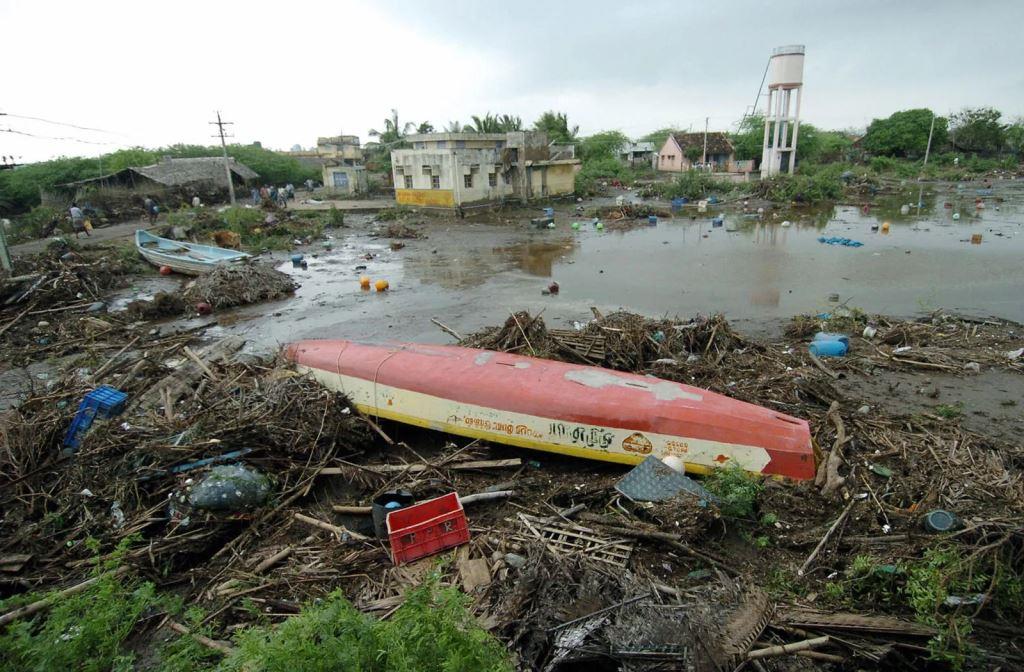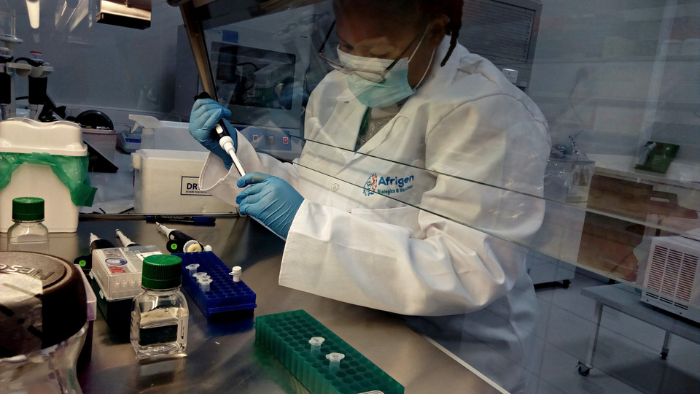Tennessee boosts rural healthcare workforce with $10.7M initiative

Beginning in July, 38 organizations across Tennessee will receive funding to grow the healthcare workforce in rural counties. KNOXVILLE, Tenn. — The Tennessee Department of Labor and Workforce Development announced it awarded $10.7 million in grant funding to support rural healthcare initiatives across the state. Beginning in July, 38 organizations across Tennessee will receive funding to grow the healthcare workforce in rural counties. Among the recipients in East Tennessee are Covenant Health, Roane Medical Center, Mountain People’s Health Council and several others. The Rural Healthcare Initiatives Program will enable organizations to support 51 health-related occupations across 91 of Tennessee’s 95 non-metropolitan counties. “The Rural Healthcare Initiatives Program is a critical step toward building a sustainable healthcare workforce in Tennessee’s rural areas,” Labor and Workforce Development Commissioner Deniece Thomas said. “This initiative provides financial resources to support training, certifications, and apprenticeships.” The program will provide financial resources for training, certifications and apprenticeships. It will also cover other costs such as transportation, childcare and examination fees to reduce barriers for those entering or advancing in healthcare careers. “Our goal is to remove barriers and create opportunities for individuals to enter and excel in healthcare careers in Tennessee’s rural communities,” Thomas said. “We know a healthy Tennessee is a vibrant Tennessee, and nowhere is that more important than in our rural communities.” Gov. Bill Lee has included a second year of funding for the program in his proposed budget for the 2025–2026 fiscal year.
Investing in health tech to transform rural healthcare in Africa

Go to any village across this continent, and the struggle for decent healthcare is real. Mothers lose children, families watch loved ones suffer needlessly, and communities are trapped in a cycle of sickness. We talk about fundamental human rights, but for millions in our rural areas, quality healthcare is a pipe dream. The roads are bad, clinics are understaffed, and even when there is a clinic, affording treatment is another hurdle altogether. But I believe health data technology offers a real opportunity to change this narrative. It’s not a magic bullet, but a way to make real progress in these underserved communities. “Digitisation reduces administrative burden, freeing up time for patient care.” Challenges on the digital frontier The internet situation in many of our rural areas is patchy at best and non-existent at worst. Transferring medical records, conducting telemedicine consultations, and using remote monitoring devices are impossible with such unreliable connectivity. This is the biggest hurdle we face when bringing these technologies to the people who need them most. And it’s not just the internet. We’re struggling to find enough doctors and nurses to staff our rural clinics because our bright young graduates, those with the skills, flock to the cities for better urban opportunities. Recruiting talent to rural areas is a tough sell. It’s a real brain drain, and it’s crippling our efforts to bring quality healthcare to these communities. Our rural clinics are already running on fumes. Their budgets are stretched thinner than ever. These technologies come with a hefty price tag. For many of these facilities, the upfront costs alone are enough to make their heads spin. They simply can’t afford the improvements they need without significant financial assistance. Even with infrastructure, expertise, and funding, technology adoption requires user comfort. Digital literacy is low in many rural communities. Simply providing the technology isn’t enough; we must invest in training, education, and personalised guidance to build trust. Otherwise, it’s just expensive equipment gathering dust. Benefits of health data technology Despite all these hurdles, the potential here is absolutely huge. Electronic health records provide a complete patient history for doctors and nurses. And telehealth transforms access to care, especially for remote patients unable to travel. Currently, rural patients often experience fragmented care, with limited information sharing between local doctors and city specialists. These systems facilitate seamless information sharing between healthcare providers. Telehealth expands access to specialists. Our healthcare workers are drowning in paperwork. Digitising records changes all that. Digitisation reduces administrative burden, freeing up time for patient care. This data has immense potential. It can help us track diseases, understand health trends, and develop targeted public health interventions. Regulatory considerations Careful consideration of regulations is essential. Data privacy is paramount. Regulations like the Health Insurance Portability and Accountability Act (HIPAA) exist for a reason. We need to ensure that our healthcare facilities have the right security measures in place: secure storage, encryption, access controls, and robust security. We also need to understand the specific regulations around telehealth. Telehealth regulations and reimbursement must be understood. Innovative solutions Closing this healthcare technology gap is going to take a concerted effort on multiple fronts. We have to tackle this broadband issue. Reliable rural internet access is essential. Public-private partnerships are also essential. Both the government and the private sector must invest in infrastructure. And while we’re building out the infrastructure, we need to aggressively promote telemedicine and telehealth. Robust telehealth programs are critical. Practical, tailored training is essential for effective technology use. IT specialists are equally critical. Local IT expertise must be developed. Mobile clinics can bring healthcare to remote communities. Community health workers are critical for education and trust-building. Funding through public-private partnerships and grants is essential. The human element Technology is just a tool. We have to engage with our communities, understand their needs, and empower them to take ownership of their health. Solutions must be based on community needs. We need to establish feedback mechanisms. Awareness campaigns are essential for technology adoption. Robust awareness campaigns (e.g., community workshops, training sessions, health fairs) are needed. Patient empowerment through data access is essential. Education on telehealth benefits is also critical. The digital divide must be addressed. We have to address this digital divide head-on. Local champions are key to adoption. Local community leaders must be engaged. Improving rural healthcare is a long-term endeavour. Addressing infrastructure, skills, and funding gaps is essential. Community engagement and empowerment are critical. If we do all these things, we can build a future where quality healthcare isn’t a privilege for the few, but a fundamental right for every single person, no matter where they live. About the author: Ota Akhigbe is a results-oriented leader with over 16 years of experience driving impactful change across diverse sectors in Africa, including healthcare, infrastructure development, and financial inclusion. She is passionate about leveraging technology and building strategic partnerships to improve access to quality services and enhance community well-being.
Investing in health tech to transform rural healthcare in Africa

Go to any village across this continent, and the struggle for decent healthcare is real. Mothers lose children, families watch loved ones suffer needlessly, and communities are trapped in a cycle of sickness. We talk about fundamental human rights, but for millions in our rural areas, quality healthcare is a pipe dream. The roads are bad, clinics are understaffed, and even when there is a clinic, affording treatment is another hurdle altogether. But I believe health data technology offers a real opportunity to change this narrative. It’s not a magic bullet, but a way to make real progress in these underserved communities. “Digitisation reduces administrative burden, freeing up time for patient care.” Challenges on the digital frontier The internet situation in many of our rural areas is patchy at best and non-existent at worst. Transferring medical records, conducting telemedicine consultations, and using remote monitoring devices are impossible with such unreliable connectivity. This is the biggest hurdle we face when bringing these technologies to the people who need them most. And it’s not just the internet. We’re struggling to find enough doctors and nurses to staff our rural clinics because our bright young graduates, those with the skills, flock to the cities for better urban opportunities. Recruiting talent to rural areas is a tough sell. It’s a real brain drain, and it’s crippling our efforts to bring quality healthcare to these communities. Our rural clinics are already running on fumes. Their budgets are stretched thinner than ever. These technologies come with a hefty price tag. For many of these facilities, the upfront costs alone are enough to make their heads spin. They simply can’t afford the improvements they need without significant financial assistance. Even with infrastructure, expertise, and funding, technology adoption requires user comfort. Digital literacy is low in many rural communities. Simply providing the technology isn’t enough; we must invest in training, education, and personalised guidance to build trust. Otherwise, it’s just expensive equipment gathering dust. Benefits of health data technology Despite all these hurdles, the potential here is absolutely huge. Electronic health records provide a complete patient history for doctors and nurses. And telehealth transforms access to care, especially for remote patients unable to travel. Currently, rural patients often experience fragmented care, with limited information sharing between local doctors and city specialists. These systems facilitate seamless information sharing between healthcare providers. Telehealth expands access to specialists. Our healthcare workers are drowning in paperwork. Digitising records changes all that. Digitisation reduces administrative burden, freeing up time for patient care. This data has immense potential. It can help us track diseases, understand health trends, and develop targeted public health interventions. Regulatory considerations Careful consideration of regulations is essential. Data privacy is paramount. Regulations like the Health Insurance Portability and Accountability Act (HIPAA) exist for a reason. We need to ensure that our healthcare facilities have the right security measures in place: secure storage, encryption, access controls, and robust security. We also need to understand the specific regulations around telehealth. Telehealth regulations and reimbursement must be understood. Innovative solutions Closing this healthcare technology gap is going to take a concerted effort on multiple fronts. We have to tackle this broadband issue. Reliable rural internet access is essential. Public-private partnerships are also essential. Both the government and the private sector must invest in infrastructure. And while we’re building out the infrastructure, we need to aggressively promote telemedicine and telehealth. Robust telehealth programs are critical. Practical, tailored training is essential for effective technology use. IT specialists are equally critical. Local IT expertise must be developed. Mobile clinics can bring healthcare to remote communities. Community health workers are critical for education and trust-building. Funding through public-private partnerships and grants is essential. The human element Technology is just a tool. We have to engage with our communities, understand their needs, and empower them to take ownership of their health. Solutions must be based on community needs. We need to establish feedback mechanisms. Awareness campaigns are essential for technology adoption. Robust awareness campaigns (e.g., community workshops, training sessions, health fairs) are needed. Patient empowerment through data access is essential. Education on telehealth benefits is also critical. The digital divide must be addressed. We have to address this digital divide head-on. Local champions are key to adoption. Local community leaders must be engaged. Improving rural healthcare is a long-term endeavour. Addressing infrastructure, skills, and funding gaps is essential. Community engagement and empowerment are critical. If we do all these things, we can build a future where quality healthcare isn’t a privilege for the few, but a fundamental right for every single person, no matter where they live. About the author: Ota Akhigbe is a results-oriented leader with over 16 years of experience driving impactful change across diverse sectors in Africa, including healthcare, infrastructure development, and financial inclusion. She is passionate about leveraging technology and building strategic partnerships to improve access to quality services and enhance community well-being.
Condition of rural health facilities dreadful — S-East indigenes

By Anayo Okoli, Dennis Agbo, Chinonso Alozie & Jeff Agbodo ENUGU -THE condition of health facilities in rural communities in the South-East region is disappointing. Rural dwellers go through a lot to access healthcare. In many communities, there are no health centres, where they exist, they are in a sorry state. Even those built through community efforts have been abandoned by the governments to rot away. The situation has left rural dwellers at the mercy of local medicine sellers and herbalists. What efforts are the state governments making to change the situation? No electricity, no water in our hospital —Ikem residents The condition of Ikem General Hospital in Isi-Uzo Local Government Area of Enugu State has caused residents of the community untold pain and frustration. Originally established to take care of the health needs of residents of communities in Isi-Uzo and Udenu local government areas, the hospital has been left to rot away. Our reporter visited the hospital and interacted with the locals who expressed sadness over the state of the hospital despite several promises by the government. From the entrance of the hospital, one is confronted with disappointment by the sight of overgrown weeds that have almost eclipsed the signpost of the hospital. A rusty bus belonging to the hospital could be seen parked beside a non-functional borehole with an empty overhead tank. Besides the bus, partially burnt syringes, needles, and other disposable medical instruments could be seen scattered around, indicating that the hospital does not have a functional incinerator. Sadly, there was no staff at the hospital when our reporter visited. The entrance to the main hospital hall was locked. Behind the hall is the Out-Patient Department (OPD) which residents said was newly constructed by the state government. The OPD, however, is surrounded by thick bushes with no staff in sight. At the far left of the OPD is what used to serve as the hospital ward; the structure was demolished by the state government after a resident made a video of it and posted on Facebook in early 2020. Embarrassed by the gory sight of the facility, the then administration pulled down the building, promising to build a befitting ward for the hospital. The relics of the building are still intact. The maternity section of the hospital is said to be fully functional though most residents have lost faith in the facility. The women rather patronize private maternity homes and traditional birth attendants. A bungalow located a few meters away from the hospital was meant to serve as the doctor’s quarter, but the building is uninhabited as the doctors posted to the hospital live within a range of over 65 kilometers outside the community. On a second visit to the hospital, our reporter met a staff of the hospital who was willing to talk albeit under anonymity. He said that though the government promised to renovate the hospital, no action has been seen from the government. “The state government wanted to renovate that hospital but after demolishing the ward, they left it like that. This happened in 2020. People have even started encroaching on the hospital land. Nothing is working in the hospital except the mortuary and the laboratory working partially. “If you have a wound now and you go to the hospital, they cannot even treat your wound. There is no electricity and there is no generator. It is only the laboratory that has a generator which was donated by the late Chief Greg Ugwueze,” he said. A health worker who hails from the community, Moses Nnamuchi, said the hospital is there but you don’t see doctors; you don’t see nurses. All of them are running their private businesses because the government is not serious about it and nobody is asking questions. “As long as I am alive, none of my relatives will go there for any reason. Even if I am unconscious, nobody should take me to that place. What is the essence of taking me there when there is nobody to take care of me? “Our women go to all these local midwives. That is the only alternative. If you go to the hospital now, you won’t see anybody. All the doors are locked. So are you taking a woman in labour there to see the physical building or to be attended to? As I am speaking to you, it is a dead zone. It is a place where these rascals go to smoke and play their gambling games because nothing is happening there.” Osmund Ugwu, a public servant who hails from the area narrated how two of his cousins died as a result of the poor state of the hospital. “I had two cousins who died because of the condition of the so-called general hospital in my community. When we were younger, we enjoyed that hospital but it is no longer the case.” Gabriel Nnaji, a community leader in the area accused the government of utter neglect after several promises. “We don’t have a hospital anywhere. The building is there but there is no hospital. “If the government can come and do some renovations, bring doctors that can be here and get the necessary equipment, things will be different. When our people get sick and they don’t have money to go to Enugu, then you are at the mercy of God.” The Enugu State Commissioner for Health, Dr Ike Obi accepted the fact that Ikem General Hospital has deteriorated and said that the government will soon take action. Also, the Mbah administration, he said, is taking drastic measures to change the condition of all hospitals in the state, including those in the rural communities. In Anambra, the story is the same. Rural health facilities are in total ruins. In Orumba North and South council areas, like other rural councils, hardly is any government rural health centre functioning well. Rather, the ones operated by the churches maintain skeletal services. However, the government has revived some general hospitals mainly in the urban communities. In
Condition of rural health facilities dreadful — S-East indigenes

By Anayo Okoli, Dennis Agbo, Chinonso Alozie & Jeff Agbodo ENUGU -THE condition of health facilities in rural communities in the South-East region is disappointing. Rural dwellers go through a lot to access healthcare. In many communities, there are no health centres, where they exist, they are in a sorry state. Even those built through community efforts have been abandoned by the governments to rot away. The situation has left rural dwellers at the mercy of local medicine sellers and herbalists. What efforts are the state governments making to change the situation? No electricity, no water in our hospital —Ikem residents The condition of Ikem General Hospital in Isi-Uzo Local Government Area of Enugu State has caused residents of the community untold pain and frustration. Originally established to take care of the health needs of residents of communities in Isi-Uzo and Udenu local government areas, the hospital has been left to rot away. Our reporter visited the hospital and interacted with the locals who expressed sadness over the state of the hospital despite several promises by the government. From the entrance of the hospital, one is confronted with disappointment by the sight of overgrown weeds that have almost eclipsed the signpost of the hospital. A rusty bus belonging to the hospital could be seen parked beside a non-functional borehole with an empty overhead tank. Besides the bus, partially burnt syringes, needles, and other disposable medical instruments could be seen scattered around, indicating that the hospital does not have a functional incinerator. Sadly, there was no staff at the hospital when our reporter visited. The entrance to the main hospital hall was locked. Behind the hall is the Out-Patient Department (OPD) which residents said was newly constructed by the state government. The OPD, however, is surrounded by thick bushes with no staff in sight. At the far left of the OPD is what used to serve as the hospital ward; the structure was demolished by the state government after a resident made a video of it and posted on Facebook in early 2020. Embarrassed by the gory sight of the facility, the then administration pulled down the building, promising to build a befitting ward for the hospital. The relics of the building are still intact. The maternity section of the hospital is said to be fully functional though most residents have lost faith in the facility. The women rather patronize private maternity homes and traditional birth attendants. A bungalow located a few meters away from the hospital was meant to serve as the doctor’s quarter, but the building is uninhabited as the doctors posted to the hospital live within a range of over 65 kilometers outside the community. On a second visit to the hospital, our reporter met a staff of the hospital who was willing to talk albeit under anonymity. He said that though the government promised to renovate the hospital, no action has been seen from the government. “The state government wanted to renovate that hospital but after demolishing the ward, they left it like that. This happened in 2020. People have even started encroaching on the hospital land. Nothing is working in the hospital except the mortuary and the laboratory working partially. “If you have a wound now and you go to the hospital, they cannot even treat your wound. There is no electricity and there is no generator. It is only the laboratory that has a generator which was donated by the late Chief Greg Ugwueze,” he said. A health worker who hails from the community, Moses Nnamuchi, said the hospital is there but you don’t see doctors; you don’t see nurses. All of them are running their private businesses because the government is not serious about it and nobody is asking questions. “As long as I am alive, none of my relatives will go there for any reason. Even if I am unconscious, nobody should take me to that place. What is the essence of taking me there when there is nobody to take care of me? “Our women go to all these local midwives. That is the only alternative. If you go to the hospital now, you won’t see anybody. All the doors are locked. So are you taking a woman in labour there to see the physical building or to be attended to? As I am speaking to you, it is a dead zone. It is a place where these rascals go to smoke and play their gambling games because nothing is happening there.” Osmund Ugwu, a public servant who hails from the area narrated how two of his cousins died as a result of the poor state of the hospital. “I had two cousins who died because of the condition of the so-called general hospital in my community. When we were younger, we enjoyed that hospital but it is no longer the case.” Gabriel Nnaji, a community leader in the area accused the government of utter neglect after several promises. “We don’t have a hospital anywhere. The building is there but there is no hospital. “If the government can come and do some renovations, bring doctors that can be here and get the necessary equipment, things will be different. When our people get sick and they don’t have money to go to Enugu, then you are at the mercy of God.” The Enugu State Commissioner for Health, Dr Ike Obi accepted the fact that Ikem General Hospital has deteriorated and said that the government will soon take action. Also, the Mbah administration, he said, is taking drastic measures to change the condition of all hospitals in the state, including those in the rural communities. In Anambra, the story is the same. Rural health facilities are in total ruins. In Orumba North and South council areas, like other rural councils, hardly is any government rural health centre functioning well. Rather, the ones operated by the churches maintain skeletal services. However, the government has revived some general hospitals mainly in the urban communities. In
AHA announces recipients of 2024 Rural Health Leadership Award

The AHA today announced the team from Columbia Memorial Hospital, a critical access hospital in Astoria, Ore., is the 2024 recipient of the Rural Hospital Leadership Team Award. The award recognizes rural hospital leaders who guide their hospitals and communities through change and innovation. Also recognized as finalists were teams at Atrium Health Lincoln in Lincoln, N.C.; Schneck Medical Center in Seymour, Ind.; and Summit Pacific Medical Center in Elma, Wash. The award will be presented at the 38th annual AHA Rural Health Care Leadership Conference, taking place Feb. 23-26 in San Antonio.
Investing in health tech to transform rural healthcare in Africa

Go to any village across this continent, and the struggle for decent healthcare is real. Mothers lose children, families watch loved ones suffer needlessly, and communities are trapped in a cycle of sickness. We talk about fundamental human rights, but for millions in our rural areas, quality healthcare is a pipe dream. The roads are bad, clinics are understaffed, and even when there is a clinic, affording treatment is another hurdle altogether. But I believe health data technology offers a real opportunity to change this narrative. It’s not a magic bullet, but a way to make real progress in these underserved communities. “Digitisation reduces administrative burden, freeing up time for patient care.” Challenges on the digital frontier The internet situation in many of our rural areas is patchy at best and non-existent at worst. Transferring medical records, conducting telemedicine consultations, and using remote monitoring devices are impossible with such unreliable connectivity. This is the biggest hurdle we face when bringing these technologies to the people who need them most. And it’s not just the internet. We’re struggling to find enough doctors and nurses to staff our rural clinics because our bright young graduates, those with the skills, flock to the cities for better urban opportunities. Recruiting talent to rural areas is a tough sell. It’s a real brain drain, and it’s crippling our efforts to bring quality healthcare to these communities. Our rural clinics are already running on fumes. Their budgets are stretched thinner than ever. These technologies come with a hefty price tag. For many of these facilities, the upfront costs alone are enough to make their heads spin. They simply can’t afford the improvements they need without significant financial assistance. Even with infrastructure, expertise, and funding, technology adoption requires user comfort. Digital literacy is low in many rural communities. Simply providing the technology isn’t enough; we must invest in training, education, and personalised guidance to build trust. Otherwise, it’s just expensive equipment gathering dust. Benefits of health data technology Despite all these hurdles, the potential here is absolutely huge. Electronic health records provide a complete patient history for doctors and nurses. And telehealth transforms access to care, especially for remote patients unable to travel. Currently, rural patients often experience fragmented care, with limited information sharing between local doctors and city specialists. These systems facilitate seamless information sharing between healthcare providers. Telehealth expands access to specialists. Our healthcare workers are drowning in paperwork. Digitising records changes all that. Digitisation reduces administrative burden, freeing up time for patient care. This data has immense potential. It can help us track diseases, understand health trends, and develop targeted public health interventions. Regulatory considerations Careful consideration of regulations is essential. Data privacy is paramount. Regulations like the Health Insurance Portability and Accountability Act (HIPAA) exist for a reason. We need to ensure that our healthcare facilities have the right security measures in place: secure storage, encryption, access controls, and robust security. We also need to understand the specific regulations around telehealth. Telehealth regulations and reimbursement must be understood. Innovative solutions Closing this healthcare technology gap is going to take a concerted effort on multiple fronts. We have to tackle this broadband issue. Reliable rural internet access is essential. Public-private partnerships are also essential. Both the government and the private sector must invest in infrastructure. And while we’re building out the infrastructure, we need to aggressively promote telemedicine and telehealth. Robust telehealth programs are critical. Practical, tailored training is essential for effective technology use. IT specialists are equally critical. Local IT expertise must be developed. Mobile clinics can bring healthcare to remote communities. Community health workers are critical for education and trust-building. Funding through public-private partnerships and grants is essential. The human element Technology is just a tool. We have to engage with our communities, understand their needs, and empower them to take ownership of their health. Solutions must be based on community needs. We need to establish feedback mechanisms. Awareness campaigns are essential for technology adoption. Robust awareness campaigns (e.g., community workshops, training sessions, health fairs) are needed. Patient empowerment through data access is essential. Education on telehealth benefits is also critical. The digital divide must be addressed. We have to address this digital divide head-on. Local champions are key to adoption. Local community leaders must be engaged. Improving rural healthcare is a long-term endeavour. Addressing infrastructure, skills, and funding gaps is essential. Community engagement and empowerment are critical. If we do all these things, we can build a future where quality healthcare isn’t a privilege for the few, but a fundamental right for every single person, no matter where they live. About the author: Ota Akhigbe is a results-oriented leader with over 16 years of experience driving impactful change across diverse sectors in Africa, including healthcare, infrastructure development, and financial inclusion. She is passionate about leveraging technology and building strategic partnerships to improve access to quality services and enhance community well-being.
Tennessee boosts rural healthcare workforce with $10.7M initiative

Beginning in July, 38 organizations across Tennessee will receive funding to grow the healthcare workforce in rural counties. KNOXVILLE, Tenn. — The Tennessee Department of Labor and Workforce Development announced it awarded $10.7 million in grant funding to support rural healthcare initiatives across the state. Beginning in July, 38 organizations across Tennessee will receive funding to grow the healthcare workforce in rural counties. Among the recipients in East Tennessee are Covenant Health, Roane Medical Center, Mountain People’s Health Council and several others. The Rural Healthcare Initiatives Program will enable organizations to support 51 health-related occupations across 91 of Tennessee’s 95 non-metropolitan counties. “The Rural Healthcare Initiatives Program is a critical step toward building a sustainable healthcare workforce in Tennessee’s rural areas,” Labor and Workforce Development Commissioner Deniece Thomas said. “This initiative provides financial resources to support training, certifications, and apprenticeships.” The program will provide financial resources for training, certifications and apprenticeships. It will also cover other costs such as transportation, childcare and examination fees to reduce barriers for those entering or advancing in healthcare careers. “Our goal is to remove barriers and create opportunities for individuals to enter and excel in healthcare careers in Tennessee’s rural communities,” Thomas said. “We know a healthy Tennessee is a vibrant Tennessee, and nowhere is that more important than in our rural communities.” Gov. Bill Lee has included a second year of funding for the program in his proposed budget for the 2025–2026 fiscal year.
Condition of rural health facilities dreadful — S-East indigenes

By Anayo Okoli, Dennis Agbo, Chinonso Alozie & Jeff Agbodo ENUGU -THE condition of health facilities in rural communities in the South-East region is disappointing. Rural dwellers go through a lot to access healthcare. In many communities, there are no health centres, where they exist, they are in a sorry state. Even those built through community efforts have been abandoned by the governments to rot away. The situation has left rural dwellers at the mercy of local medicine sellers and herbalists. What efforts are the state governments making to change the situation? No electricity, no water in our hospital —Ikem residents The condition of Ikem General Hospital in Isi-Uzo Local Government Area of Enugu State has caused residents of the community untold pain and frustration. Originally established to take care of the health needs of residents of communities in Isi-Uzo and Udenu local government areas, the hospital has been left to rot away. Our reporter visited the hospital and interacted with the locals who expressed sadness over the state of the hospital despite several promises by the government. From the entrance of the hospital, one is confronted with disappointment by the sight of overgrown weeds that have almost eclipsed the signpost of the hospital. A rusty bus belonging to the hospital could be seen parked beside a non-functional borehole with an empty overhead tank. Besides the bus, partially burnt syringes, needles, and other disposable medical instruments could be seen scattered around, indicating that the hospital does not have a functional incinerator. Sadly, there was no staff at the hospital when our reporter visited. The entrance to the main hospital hall was locked. Behind the hall is the Out-Patient Department (OPD) which residents said was newly constructed by the state government. The OPD, however, is surrounded by thick bushes with no staff in sight. At the far left of the OPD is what used to serve as the hospital ward; the structure was demolished by the state government after a resident made a video of it and posted on Facebook in early 2020. Embarrassed by the gory sight of the facility, the then administration pulled down the building, promising to build a befitting ward for the hospital. The relics of the building are still intact. The maternity section of the hospital is said to be fully functional though most residents have lost faith in the facility. The women rather patronize private maternity homes and traditional birth attendants. A bungalow located a few meters away from the hospital was meant to serve as the doctor’s quarter, but the building is uninhabited as the doctors posted to the hospital live within a range of over 65 kilometers outside the community. On a second visit to the hospital, our reporter met a staff of the hospital who was willing to talk albeit under anonymity. He said that though the government promised to renovate the hospital, no action has been seen from the government. “The state government wanted to renovate that hospital but after demolishing the ward, they left it like that. This happened in 2020. People have even started encroaching on the hospital land. Nothing is working in the hospital except the mortuary and the laboratory working partially. “If you have a wound now and you go to the hospital, they cannot even treat your wound. There is no electricity and there is no generator. It is only the laboratory that has a generator which was donated by the late Chief Greg Ugwueze,” he said. A health worker who hails from the community, Moses Nnamuchi, said the hospital is there but you don’t see doctors; you don’t see nurses. All of them are running their private businesses because the government is not serious about it and nobody is asking questions. “As long as I am alive, none of my relatives will go there for any reason. Even if I am unconscious, nobody should take me to that place. What is the essence of taking me there when there is nobody to take care of me? “Our women go to all these local midwives. That is the only alternative. If you go to the hospital now, you won’t see anybody. All the doors are locked. So are you taking a woman in labour there to see the physical building or to be attended to? As I am speaking to you, it is a dead zone. It is a place where these rascals go to smoke and play their gambling games because nothing is happening there.” Osmund Ugwu, a public servant who hails from the area narrated how two of his cousins died as a result of the poor state of the hospital. “I had two cousins who died because of the condition of the so-called general hospital in my community. When we were younger, we enjoyed that hospital but it is no longer the case.” Gabriel Nnaji, a community leader in the area accused the government of utter neglect after several promises. “We don’t have a hospital anywhere. The building is there but there is no hospital. “If the government can come and do some renovations, bring doctors that can be here and get the necessary equipment, things will be different. When our people get sick and they don’t have money to go to Enugu, then you are at the mercy of God.” The Enugu State Commissioner for Health, Dr Ike Obi accepted the fact that Ikem General Hospital has deteriorated and said that the government will soon take action. Also, the Mbah administration, he said, is taking drastic measures to change the condition of all hospitals in the state, including those in the rural communities. In Anambra, the story is the same. Rural health facilities are in total ruins. In Orumba North and South council areas, like other rural councils, hardly is any government rural health centre functioning well. Rather, the ones operated by the churches maintain skeletal services. However, the government has revived some general hospitals mainly in the urban communities. In
